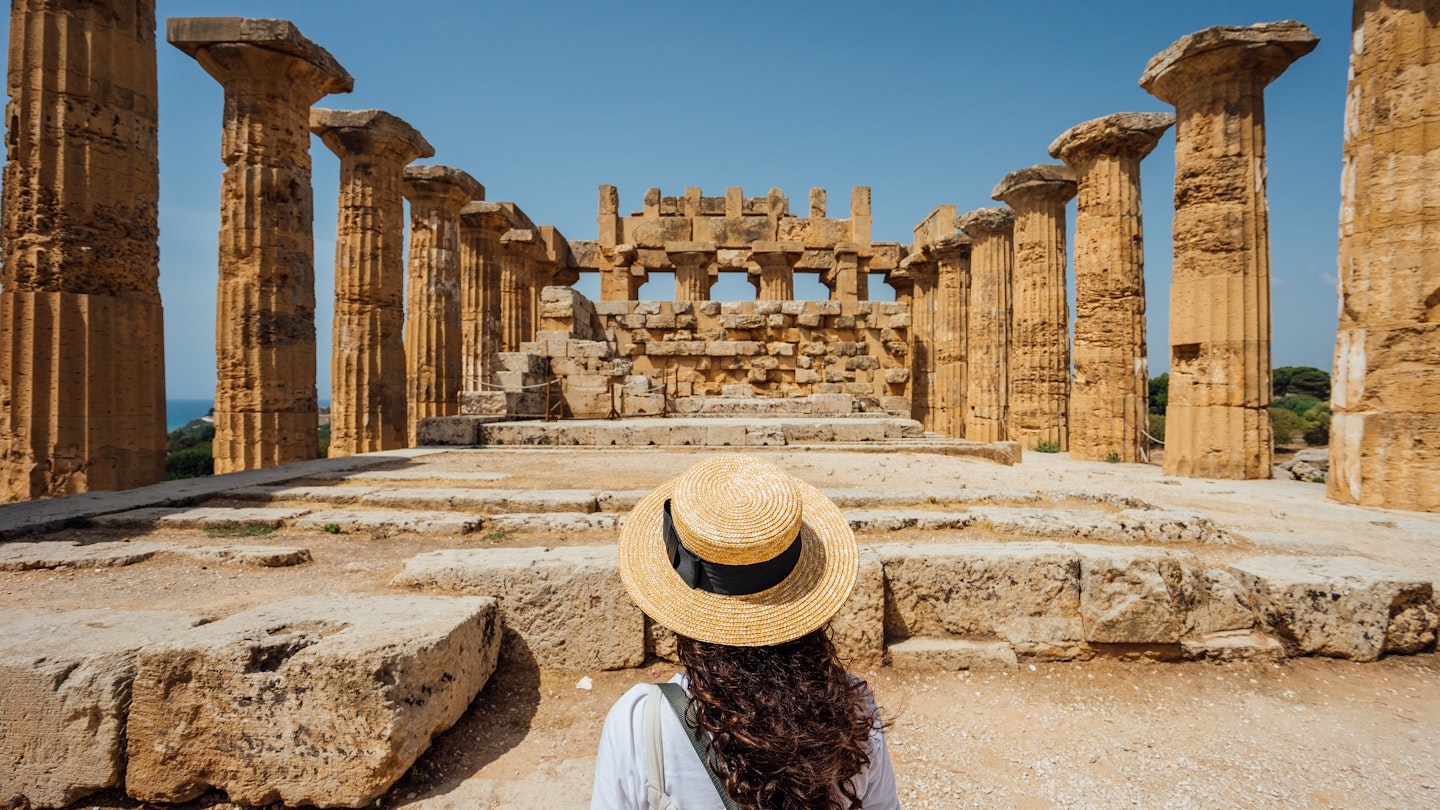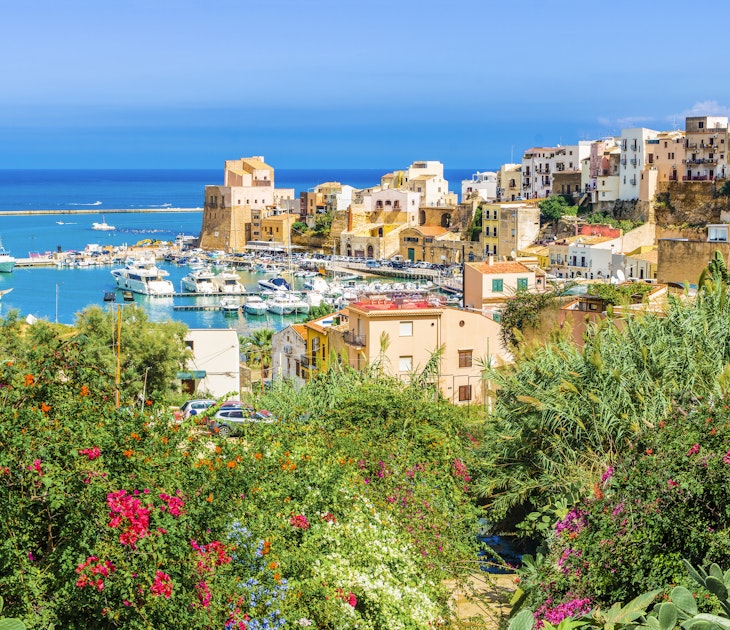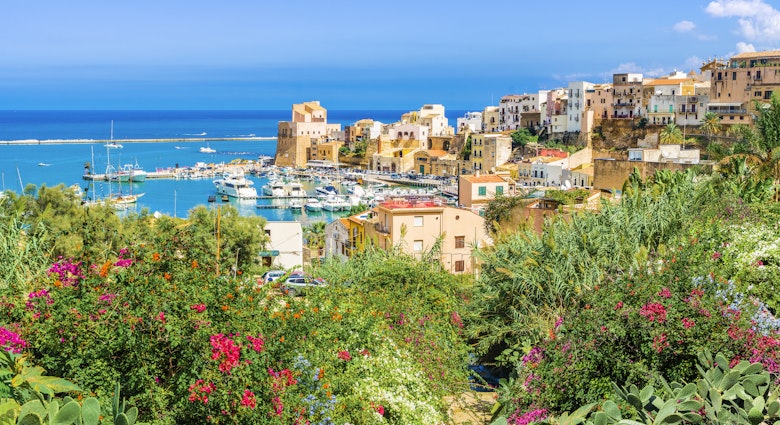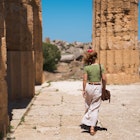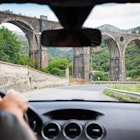The secret was out long before HBO chose to shoot the second season of The White Lotus here: an undisputed Mediterranean beauty since the time of the ancients, the Italian island of Sicily shamelessly seduces anyone who so much as dips one little toe in its turquoise, gin-clear waters.
From speakeasy coves to exhilarating sweeps of white, black or golden sand, Sicily’s emblematic paradise beaches require little introduction. Ditto for fiery Mt Etna, granita, crunchy cannoli oozing ricotta cream and its top-drawer food scene.
Yet that's tip-of-the-iceberg stuff! Look beyond the Sicilian coast and kitchen, and you find a kaleidoscope of places to visit – bursting with artistic masterpieces, cultural jewels or natural beauty in spades depending on which hilltop village, baroque town or rural retreat (be it a winery or lemon farm) you pinpoint on the treasure map. Scenic trains, buses and boats make getting around Sicily part of the experience for adventurers – or smooth the way with a rental car, the secret to accessing the most remote creases of the island’s mountainous interior.
With just a few days in Sicily, stay in one place. Count two weeks for a grand tour of the island’s Arabesque cupolas, Byzantine mosaics, ancient Greek temples and volcanic vineyards. Wherever and whenever you go, expect silver-screen stuff.
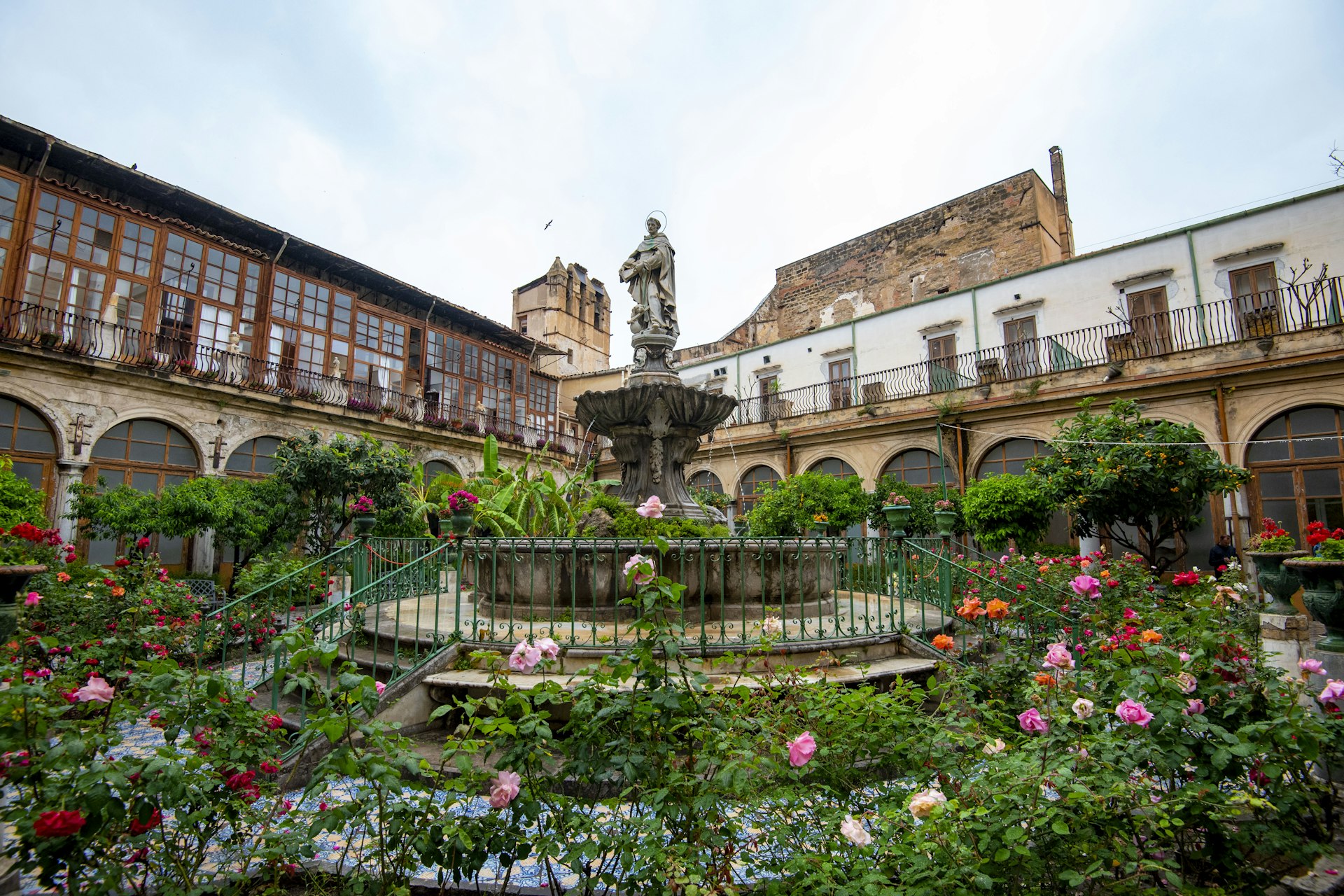
1. Palermo
Best for urban culture
Sicily’s capital assures urban adventure. Provocative street art, rough-cut food markets pulsating with local life, and pertinent multimedia Mafia-focused exhibitions provide up-to-minute commentary on this endlessly fascinating city. Art and architectural buffs meanwhile can swoon over a smorgasbord of treasures harking back centuries: Cappella Palatina in Palazzo dei Normanni; Chiesa e Monastero di Santa Caterina d’Alessandria with its speakeasy pasticceria (bakery and cake shop) in a cloister; and courtyard-garden-clad Museo Archeologico Regionale Antonio Salinas are veteran favorites.
Planning tip: Factor in a half-day bus trip to Cattedrale di Monreale. The glittering gold mosaics inside Sicily's finest example of Norman architecture leave you dumbstruck.
2. Aeolian Islands
Best for beach- and island-hopping
Boats, beaches and buckets of granita (crushed ice) soaked in fruits of the land: island-hop around the Aeolians to gorge on Sicilian dolce vita. Milazzo, on Sicily’s northeastern Tyrrhenian Coast, is the springboard for Liberty Lines ferries and hydrofoils to this seven-island slice of paradise. Scoot around the largest island Lipari; scale a volcano and unearth black beaches on primordial Stromboli; and pair sweet dessert-wine tastings with fresh capers on lush green Salina. If you have time (and the leg-power), don’t miss the spectacular hike up what feels like a “stairway to heaven” on the old-world, donkey-powered islet of Alicudi.
Planning tip: On Salina, combine family beach time in the shallow pools formed by concrete breakwaters on Lingua’s Spiaggia Biscotto with Sicily’s best granita on the seafront at Da Alfredo. On Salina's southern coast, the ricotta granita peppered with island-grown candied capers and toasted capers at Pa.Pe.Rò al Glicine is reason enough to visit bijou fishing hamlet Rinella.
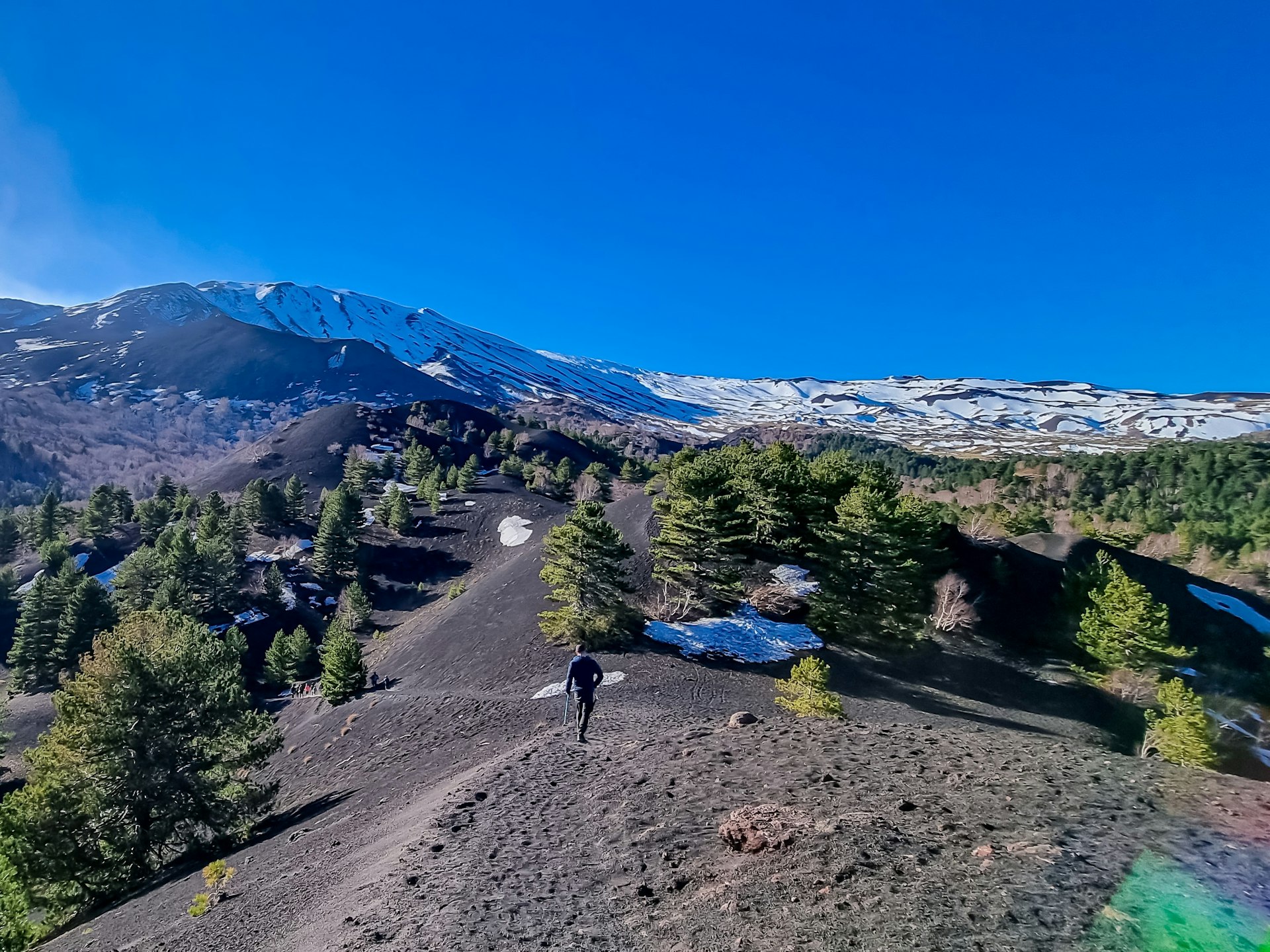
3. Mount Etna
Best for a volcanic family expedition
There’s no age limit to getting up high on Sicily’s emblematic active volcano – Europe’s largest. Three-and-a-half centuries after burying neighboring Catania in volcanic ash, Mt Etna still broods over the city. A combo of cable car (up to 2500m/8200ft from Rifugio Sapienza), 4WD vehicle and volcanological mountain guides makes light work of scaling this fiery beauty that still erupts, spangling the night sky with lava fountains and magma bubbles. If you’re with active teens, skip the cable car for a more challenging hike on Etna’s quieter northern slopes or bike up with a mountain bike guide.
Planning tip: The height to which you’re allowed without a guide changes depending on volcanic activity. Check in with licensed guides Guide Vulcanologiche Etna Nord for updates and guided hikes (from age six; best March to June and September), snow-shoeing and ski mountaineering expeditions (December to February).
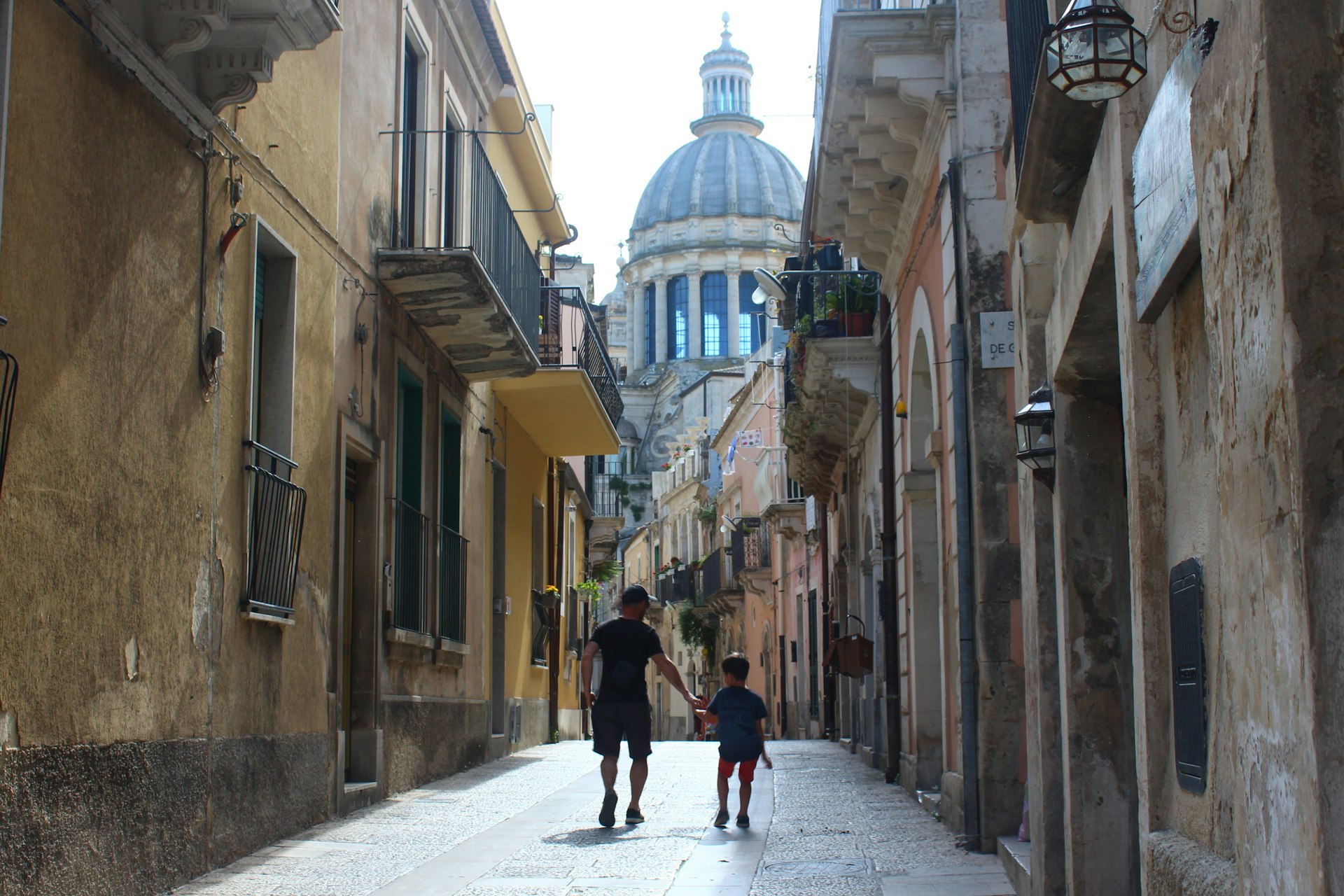
4. Ragusa Ibla
Best for baroque beauty
It needed an earthquake in 1693 to usher in Sicily’s glorious golden age. In the island’s southeast, lose yourself in the baroque labyrinth of nooks and lanes in Ragusa Ibla, awash with the decorative masks and chubby-cheeked putti (cherubs) sculpted in stone, that rose from the ashes. Don’t miss the Duomo, designed by superstar architect Rosario Gagliardi, and an intimate tour by a family member around aristocratic Palazzo Arezzo di Trifiletti from the same era. Refuel over fig, pistachio or sweet Passito di Noto wine gelato at Gelati DiVini.
Planning tip: Combine Ragusa with Modica, Scicli and Noto to create a memorable baroque-town itinerary in Sicily’s southeastern corner.
5. Reserva Naturale della Zingaro
Best for scenic coastal walks
Straddling the grand sweep of western Sicily’s Golfo di Castellammare, the island’s oldest nature reserve is a thing of beauty. Don comfy shoes and a daypack with water, a swim kit and a lunchtime picnic, and stride out along its sublime walking trails beaded with pristine coves and exhibitions in trailside huts celebrating local flora, fauna and traditional tuna fishing. If snorkeling rocks your boat, bring a mask, flippers and tuba – the crystalline waters here have some of the island’s finest snorkeling and diving.
Planning tip: Post-hike, drive 30 minutes to Segesta to admire its majestic Greek temples glowing in the late afternoon’s soft golden light.
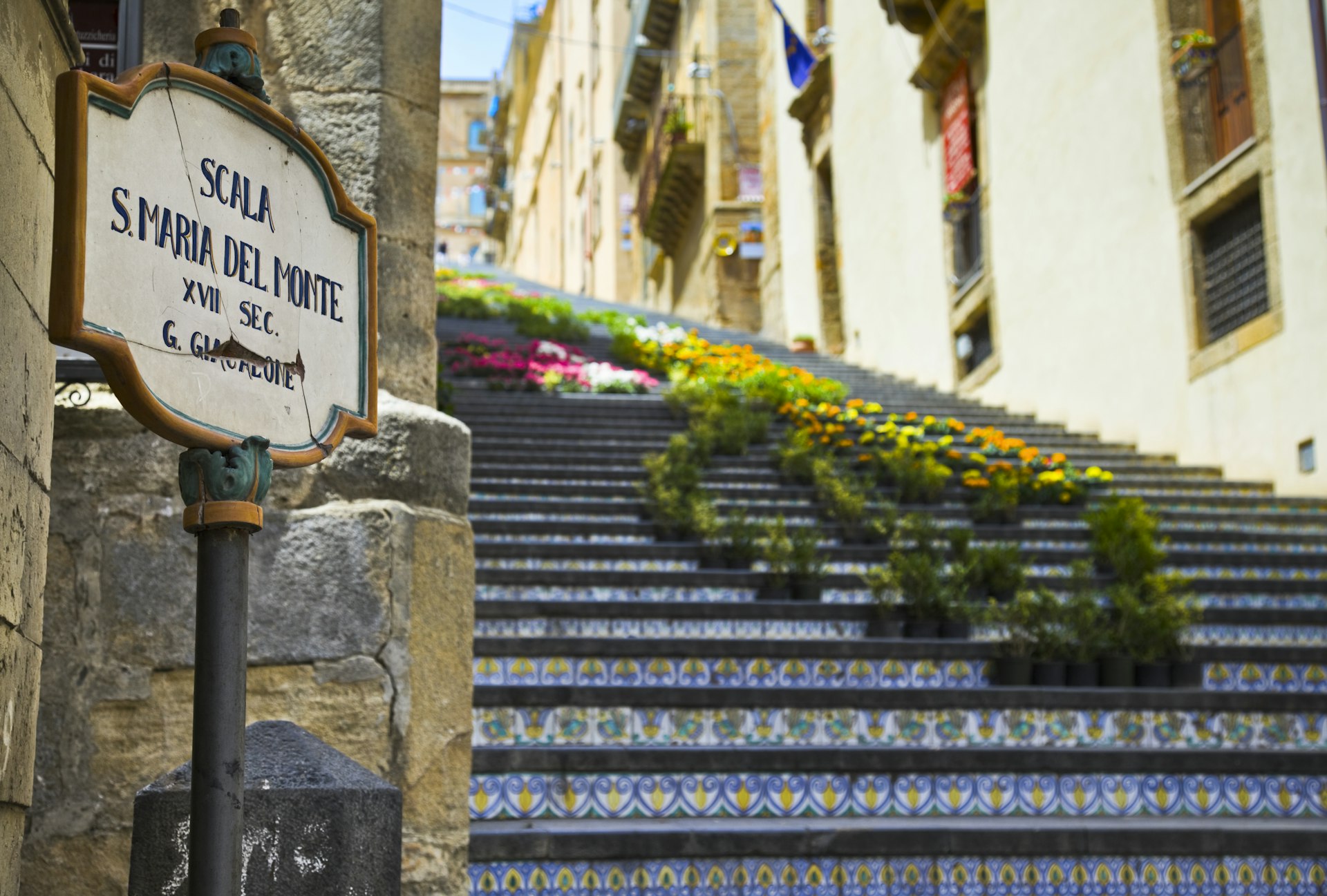
6. Caltagirone
Best for arts and crafts
From decorative grave vases spun in clay to accompany the dead, to lifelike marionettes, coral jewelry and elaborate 18th-century maiolica statuettes, Sicily’s arts and crafts heritage is immense. In central Sicily, roll up your sleeves in Caltagirone where ceramic production has been the town’s lifeblood since the Middle Ages. An abundance of wood from surrounding forests has always kept the kiln fires burning, and Scalinata di Santa Maria del Monte, the town’s monumental staircase, zig-zagging from old town to new since the 17th century razzle-dazzles with 142 steps paved in hand-painted majolica. Learn the backstory in the Museo della Ceramica, shop for ceramics and try your hand at throwing a pot of your own.
Planning tip: Visit on July 24 or 25 during Caltagirone’s Festa di San Giacomo when 4000 oil lamps light up the scalinata (staircase) after dark.
7. Parco Naturale Regionale delle Madonie
Best for getting right off the beaten track
Sicily doesn’t get wilder or more remote. Motor south from the beach-busy Tyrrhenian Coast into the folds of the rugged Monti Madonie. Ramble around medieval hilltop villages, where the lifestyle is overwhelmingly traditional, the sense of history palpable, and the mountain cuisine exceptional. Overnight in an agriturismo (farm stay) such as Casale Drinzi, where kitchens burst with wild forest mushrooms, suino nero (pork from local black pigs) and ricotta cheese fresh from the sheep. Take your foot off the gas, slow right down and detox.
Planning tip: To really get under the skin of this mountainous region, hook up with a nature guide at Madonie Explorers. Forest-bathe between ash trees and harvest manna with one of the world’s last-remaining manna farmers.

8. Catania
Best for an A to Z of Sicilian ocean fish
Its prized location between the big blue sea of the Ionian Coast and the smoking hulk of Mt Etna makes Sicily’s second-largest city a great base for exploring the eastern part of the island. Catania’s striking architecture reads like a potted history of Sicily: many of its distinctive, black-and-white palazzi (mansions) and churches are built from the very volcanic rock that Etna rained down on Catania in 1669.
Wraparound views from its church rooftops (Chiesa della Badia di Sant’Agata and Chiesa di San Nicolò l’Arena in Piazza Dante’s Benedictine monastery complex are the best) are spectacular. For foodies, one address stands out: the raucous fresh-fish market La Pescheria, swimming with swordfish, sardines, tuna, octopus, all sorts. Arrive when it opens at 7am for the pick of the ocean.
9. Valley of the Temples
Best for history nerds and romantics
That UNESCO’s temple logo is a mirror of star-turn Tempio della Concordia at Agrigento's breathtaking Valley of the Temples says it all: don’t miss Sicily’s most spectacular archaeological site, strung along a rocky promontory by the Med where the ancient Greeks erected Doric temples, tombs and sanctuaries 2500 years ago. Vestiges of subsequent 12km-long city walls and gates built around Akragas – by then the fourth-largest city in the ancient world – are equally evocative.
Planning tip: In summer, visit at sunset or after dark to sip drinks and listen to live jazz in the romantic citrus grove of walled garden Giardino della Kolymbetra, at the Valley of Temples’ western end.
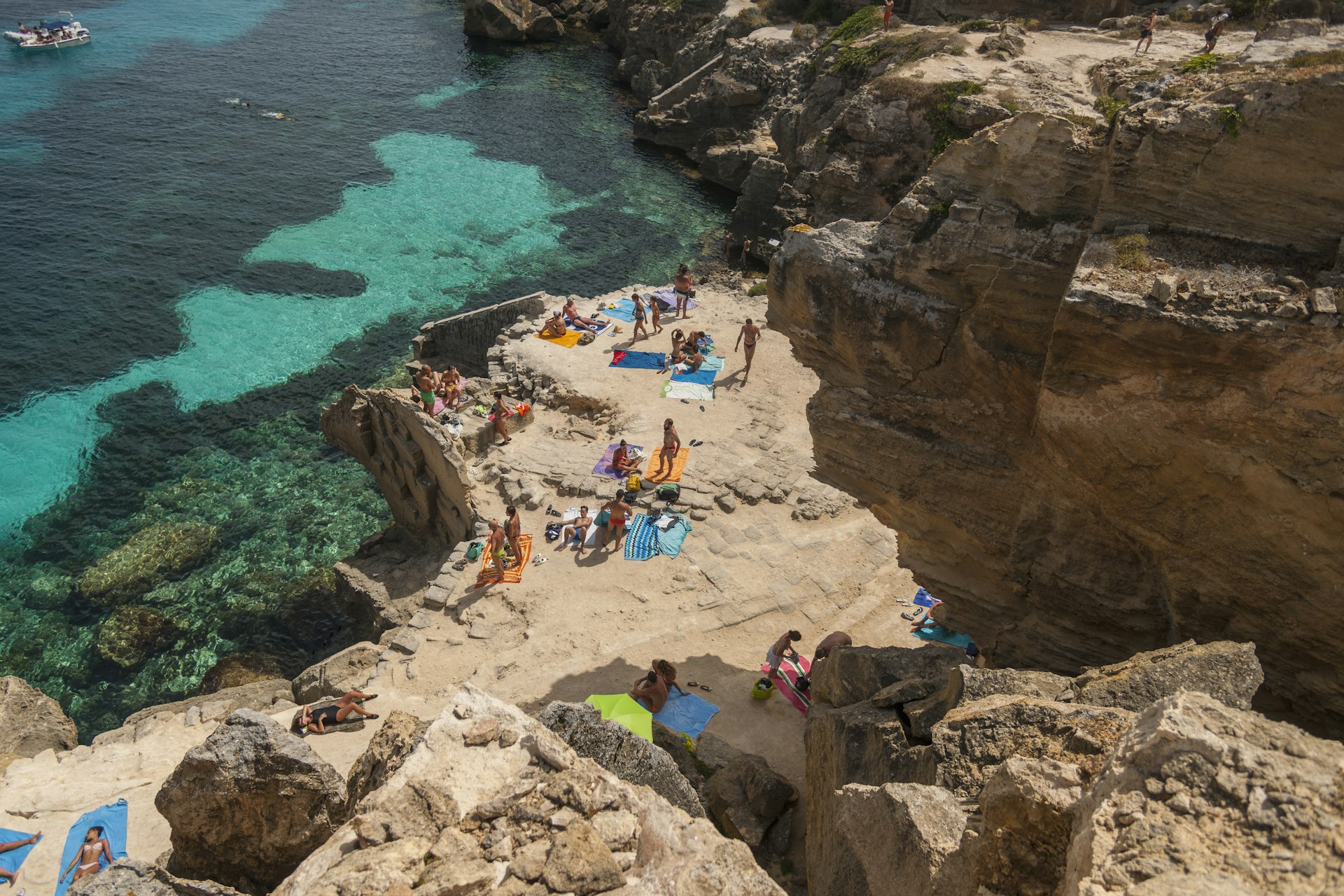
10. Favignana
Best for snorkeling, cycling and scootering around
Most Sicilian explorers have heard of the Aeolians, but fewer are familiar with the five Egadi Islands – Sicily’s “other” archipelago idyll stitched from whitewashed cottages, creamy tufa-stone walkways and bright blue cala (coves). The largest island, butterfly-shaped Favignana, is a half-hour hydrofoil ride from port town Trapani in western Sicily. Dirt roads, best tackled by bicycle or scooter, duck and dive to picture-postcard cove beaches such as Cala Rossa. Favignana’s 19th-century tuna cannery is a riveting exposé on traditional tuna fishing in Sicily’s big blue. Snorkeling is predictably spectacular.
Planning tip: For scenic hiking, rare monk seal spotting and Giuseppe’s sensational zuppa di aragosta (lobster soup) at Trattoria Il Veliero, get a hydrofoil from Favignana to Marettimo.

